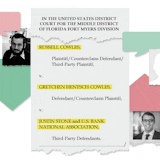The nation's top transportation safety official said Thursday that the Federal Aviation Administration accepted test results from Boeing in 2007 that failed to properly assess the risks of smoke or fire leaking from the batteries on Boeing's new 787 jets.
Deborah Hersman, the chairwoman of the National Transportation Safety Board, told reporters that the problems seemed to have originated in the battery, when one of the eight cells had a short circuit and the fire spread to the rest of the cells. But she said that Boeing's tests showed no indication that the new lithium-ion batteries on its 787 planes could erupt in flames and concluded they were likely to emit smoke less than once in every 10 million flight hours.
Once the planes were placed in service, though, the batteries overheated and emitted smoke twice last month, and caused one fire, after about 50,000 hours of commercial flights.
"The assumptions used to certify the batteries must be reconsidered," Hersman said.
Late Thursday, the FAA said it would allow Boeing to conduct test flights with its 787 to collect data on the batteries and the plane's electrical system. The agency said the flights "will be an important part of our efforts to ensure the safety of passengers and return these aircraft to service." It did not immediately specify the number of test flights or when they would begin.
Hersman said that before the FAA certified the batteries, Boeing's tests found no evidence that a short circuit in one of the eight cells could spread to other cells.
But Hersman said the fire on a 787 parked at an airport in Boston on Jan. 7 started with a short-circuit in one cell and then spread to the other cells.
She said investigators have still not been able to tell what caused the short-circuit in that cell and led to a "thermal runaway," overheating up to 500 degrees, that then cascaded to the rest of the cells.



